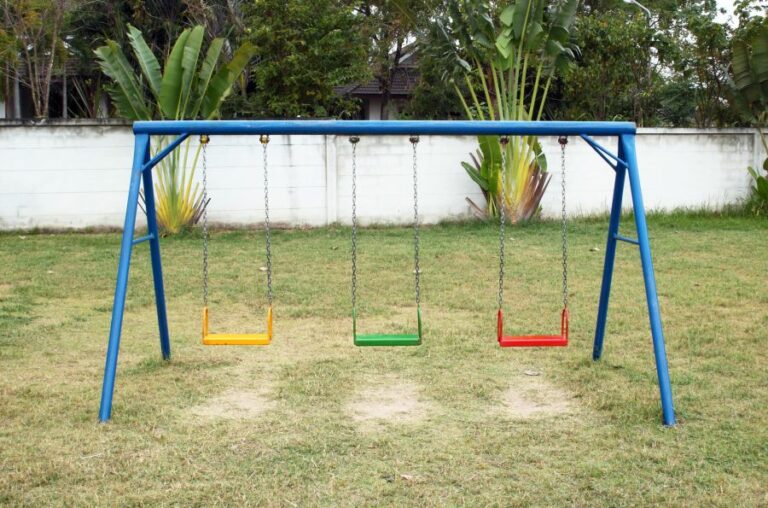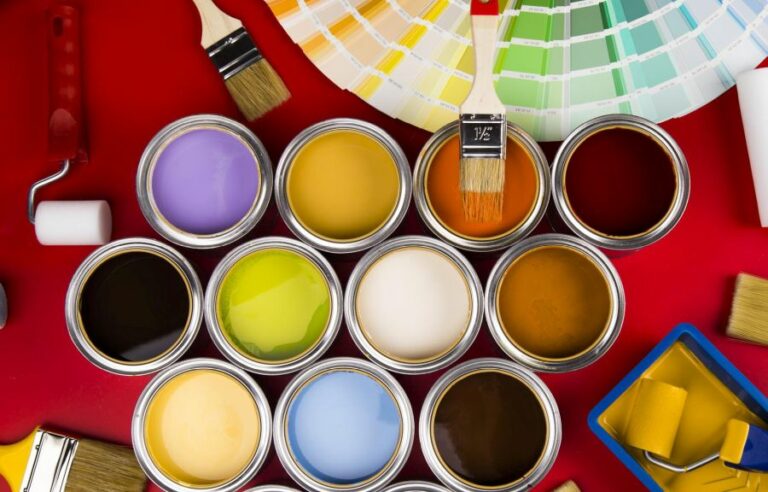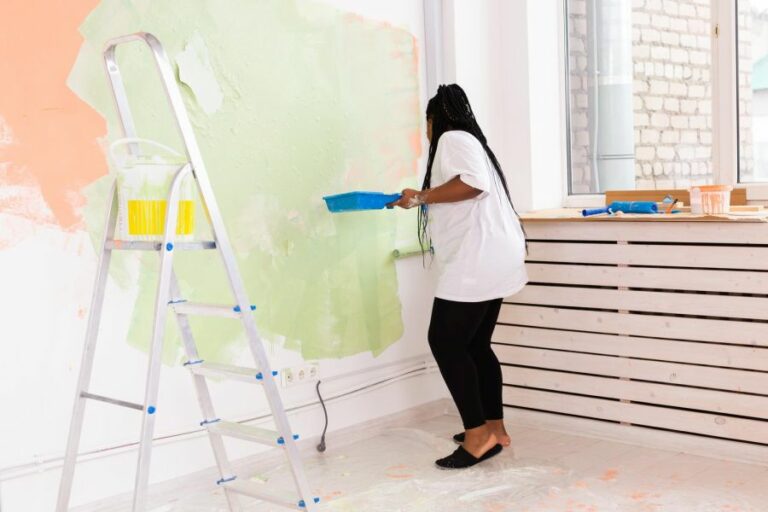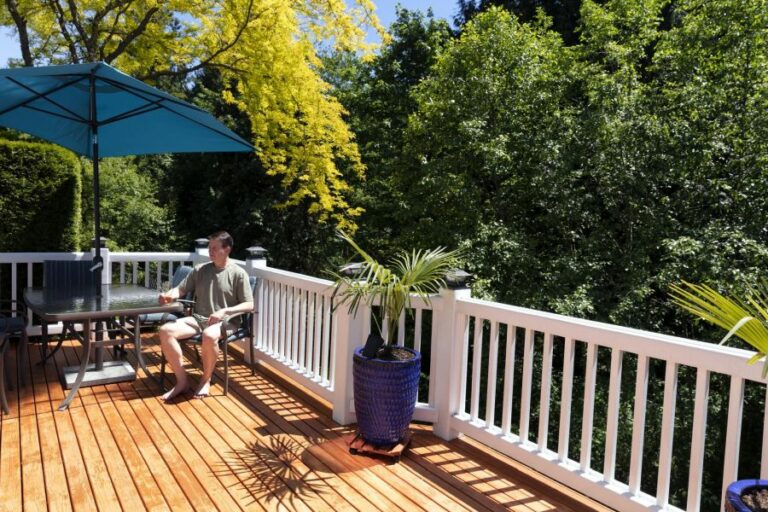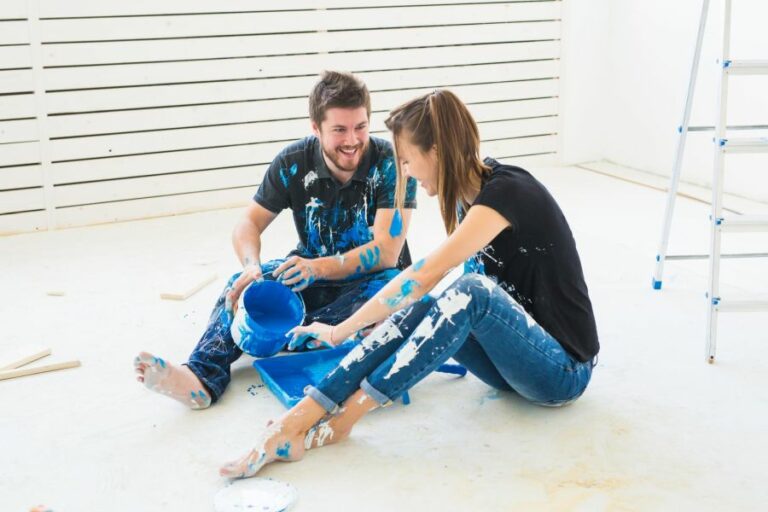How To Paint Outdoor Brick, 25 Things You Should Know
Painting the outdoor brick can be an excellent way to give your home a fresh, new look. With the right tools and techniques, you can transform the exterior appearance of your property in just a few simple steps. In this discussion, we will provide you with a clear, step-by-step guide on how to paint outdoor brick effectively, ensuring that your home will look its best for years to come. So get ready to learn the secrets of this DIY project and feel confident in your ability to master the art of outdoor brick painting.
How to paint outdoor brick:
To paint outdoor brick, clean the surface using a pressure washer or wire brush, then repair any cracks with mortar caulk. Apply masonry primer and let it dry for 24 hours. Use a paint designed for brick, like elastodynamic or acrylic latex paint, and apply it in thin, even coats. Optionally, add a second coat for better coverage. Maintain by periodically cleaning with a hose and soft-bristled brush.

Are you eager to give your outdoor brick a fresh look but unsure of the process? We’ve got you covered! Read on to discover our expert tips and techniques for painting outdoor brick flawlessly, ensuring a beautiful and long-lasting finish. Don’t miss these invaluable insights!
Contents
- 1 Guide to Painting Exterior Brick Surfaces
- 2 What Type of Paint is Suitable for Exterior Brick Surfaces?
- 3 Is it a Good Idea to Paint the Exterior of a Brick Building?
- 4 What is the process for preparing exterior brick surfaces for painting?
- 5 Is it Possible to Apply Paint Directly onto Exterior Brick Surfaces?
Guide to Painting Exterior Brick Surfaces
Painting the outdoor brick can be a daunting task, especially if you have little experience in painting or working with brick. However, with the right tools and guidance, you can achieve a professional-looking finish that will last for years to come.
• Why Paint Your Outdoor Brick?
There are several reasons why homeowners choose to paint their outdoor brick surfaces. Some common motivating factors include:
- Improving curb appeal
- Increasing property value
- Protecting the brick from moisture and other elements
- Hiding stains or imperfections
Regardless of your motive, it is essential to use the proper technique and materials to ensure a long-lasting, professional finish.
• Choosing the Right Paint for Outdoor Brick
Not all paints are suitable for outdoor brick surfaces. To achieve the best results, opt for paint specifically designed for masonry or brick. These paints are formulated to withstand harsh weather conditions and have a high level of breathability, allowing moisture to escape.
There are two main types of paint that work well on brick surfaces:
- Elastodynamic paint: This type of paint is highly elastic and can fill in small cracks and imperfections in the brick. It is also very durable and resistant to peeling, chipping, and cracking. One popular elastodynamic paint on the market is Sherwin-Williams Duration.
- Acrylic latex paint: This water-based paint is breathable and adheres well to brick surfaces. It is also resistant to fading, chalking, and mildew. Two reputable brands offering acrylic latex paint suitable for brick are Behr Premium Plus and Benjamin Moore Aura.
It is also essential to use a primer specifically designed for masonry surfaces. This will improve paint adhesion, increase durability, and provide a more uniform finish.
• Preparing Your Brick Surface for Painting
Thorough preparation is crucial for a successful paint job. Before you begin, gather the necessary materials and tools:
- Pressure washer (optional)
- Wire brush
- Garden hose and spray nozzle
- Bucket with a solution of mild detergent and water
- Stiff-bristled brush
- Masonry primer
- Paint roller, brushes, and/or sprayer
- Drop cloths or plastic sheeting
– Step 1: Clean the Brick Surface
Use a pressure washer, if available, to remove built-up dirt, mildew, and loose paint. Otherwise, use a wire brush to scrub off any loose debris. Follow up with a garden hose and spray nozzle to rinse the surface thoroughly.
If there are stubborn stains, create a solution of mild detergent and water in a bucket. Use a stiff-bristled brush to scrub the surface with soapy water, then rinse it off with the hose.
Allow the surface to dry completely before moving on to the next step.
– Step 2: Repair Cracks and Damaged Mortar
Inspect the brick and mortar for any damage or cracks. If needed, repair these areas with mortar caulk or a suitable patching material. Be sure to follow the manufacturer’s instructions for best results. Allow any repaired spots to dry or cure according to the product’s guidelines.
– Step 3: Apply the Primer
Before applying the primer, protect doors, windows, and other areas not meant to be painted by covering them with drop cloths or plastic sheeting.
Apply the masonry primer using a paint roller or brush. Alternatively, you can use a paint sprayer if you are experienced with this equipment. Allow the primer to dry according to the manufacturer’s instructions, typically around 24 hours.
• Painting Your Outdoor Brick
Now that your surface is clean, repaired, and primed, it is time to apply the paint.
– Step 1: Apply the First Coat of Paint
Using the same method as with the primer (roller, brush, or sprayer), apply the first coat of paint in a thin, even layer. Resist the urge to apply a thick coat, as this can lead to uneven coverage and premature peeling.
Allow the first coat to dry according to the paint manufacturer’s instructions, usually around four hours.
– Step 2: Apply a Second Coat (Optional)
A second coat of paint may be necessary for complete coverage and to achieve a consistent finish. If desired, apply the second coat using the same technique as with the first coat. Allow it to dry as per the manufacturer’s directions.
• Maintaining Your Painted Brick Surface
To maintain your newly-painted outdoor brick, clean it with a garden hose and a soft-bristled brush periodically to remove accumulated dirt and grime. Avoid using a pressure washer, as it can damage the paint.
With proper maintenance and quality paint, your outdoor brick should remain attractive and well-protected for years to come.
In conclusion, painting outdoor brick can be a rewarding project that adds curb appeal and protection to your home. By following the steps outlined in this guide, choosing the right paint, and performing thorough surface preparation, you can achieve a professional and long-lasting finish.
Step | Description |
|---|---|
1 | Clean the brick surface by using a wire brush to remove dirt and debris. If there is mold or mildew, use a mixture of water and bleach to scrub it away. |
2 | Rinse the brick well with water and allow it to dry completely before proceeding. |
3 | Apply a coat of primer specifically designed for brick surfaces. Use a brush, roller, or paint sprayer to apply the primer, making sure to cover the entire surface evenly. |
4 | Allow the primer to dry for the recommended time on the product label, typically at least 24 hours. |
5 | Apply the first coat of exterior acrylic latex paint or a product designed specifically for brick. Use a brush, roller, or paint sprayer to apply the paint, making sure to cover the entire surface evenly. |
6 | Allow the first coat of paint to dry for enough time, as recommended on the product label. |
7 | Apply a second coat of paint to ensure a consistent and lasting finish. |
8 | Allow the paint to dry and cure completely before using or moving any furniture or items around the painted area. |
What Type of Paint is Suitable for Exterior Brick Surfaces?
Exterior brick surfaces require a different type of paint compared to other exterior surfaces like wood or vinyl siding. Choosing the right kind of paint is essential to ensure durability, proper adhesion, and protection from the elements.
• Understanding the Characteristics of Brick
Brick is a porous material, meaning it can absorb water, moisture, and other elements over time. This characteristic makes choosing the correct paint for exterior use critical, as it should be able to resist moisture, protect the brick from damage, and retain its appearance.
– Types of Paint for Exterior Brick
There are two primary types of paint recommended for brick surfaces: Acrylic latex and silicate mineral paint. Both types have their advantages and disadvantages, which we will discuss below.
Acrylic Latex Paint
Also known as masonry paint or elastomeric paint, acrylic latex paint has a water-based formula developed with elasticity, allowing the paint to expand and contract with the brick. This flexibility prevents the paint from cracking or peeling due to temperature fluctuations or moisture exposure.
Some advantages of acrylic latex paint include:
- Easy application and clean-up with water
- Can adhere to less-than-ideal surfaces
- UV resistance for lasting color
- Dries faster than oil-based paint
On the downside, acrylic latex paint can trap moisture inside the brick, leading to potential damage over time. Additionally, the paint may chip or peel over time if not appropriately applied or if the brick is not properly prepared.
Silicate Mineral Paint
Silicate mineral paint, also known as mineral paint or potassium silicate paint, is a durable and long-lasting option for painting exterior brick surfaces. Composed of inorganic materials, this paint creates a strong bond with the masonry surface, forming an extremely durable and breathable coat.
As the paint is vapor permeable, it allows moisture to escape, protecting the brick from damage.
Some advantages of silicate mineral paint include the following:
- Long-lasting and durable finish
- Allows the brick to breathe
- Resistant to mold and mildew growth
- High resistance to UV rays and weathering
On the downside, silicate mineral paint is generally more expensive than acrylic latex paint and may be harder to find at local paint stores.
• Preparing the Brick Surface
Before painting the exterior brick surface, it is essential to ensure proper surface preparation. This is critical to achieving optimal adhesion, durability, and appearance.
– Cleaning the Surface
Thoroughly clean the brick surface to remove dirt, mildew, efflorescence (white powdery deposits from salt and minerals), and any old, deteriorating paint.
- Begin by using a stiff-bristled brush to remove loose debris and dirt.
- For mildewed areas, use a solution of 1 part bleach to 4 parts water and scrub with a scrubbing brush.
- Rinse the surface thoroughly with a garden hose or low-pressure pressure washer to remove cleaning solutions and any residues.
Allow the brick surface to dry thoroughly before proceeding with the next steps.
– Repairing Damaged Areas
Inspect the brick surface for cracks, damaged mortar joints, or other defects that may require repair.
- Use a masonry repair caulk to fill hairline cracks.
- For larger cracks or damaged mortar joints, repoint with the appropriate mortar mix.
Again, allow the surface to dry thoroughly before proceeding with the next steps.
• Applying the Paint
Proper paint application is vital to ensure an even and durable finish on the brick surface.
– Priming
Although not always necessary, using a masonry primer can improve adhesion, ensuring a long-lasting finish. Be sure to follow the manufacturer’s instructions and compatibility guidelines when selecting a primer.
– Painting
When applying acrylic latex paint, use a paint roller with a thick nap (3/4 inch or more) to cover large areas. Use a paintbrush to fill in mortar joints and smaller areas. Apply at least two coats, allowing each coat to dry as recommended by the manufacturer.
When using silicate mineral paint, apply the paint with a paintbrush, working it into the brick’s porous surface. The paint will self-level, providing a uniform finish without brush strokes. Silicate paints often require only one coat, but a second coat can be applied if needed or desired.
Allow the final coat of paint to dry thoroughly before exposing it to the elements.
• Conclusion
In summary, the type of paint you choose for exterior brick surfaces is crucial for a long-lasting, durable, and attractive finish. Both acrylic latex and silicate mineral paint are suitable options, but each has its advantages and drawbacks.
Proper surface preparation, repairs, and paint application techniques will ensure the best possible outcome for your painting project.
Type of Paint | Description |
|---|---|
Acrylic Latex Paint | Acrylic latex paint is a popular choice for exterior brick because it is highly durable, water-resistant, and easy to clean. It also allows the brick to breathe, preventing moisture buildup and damage. |
Elastodynamic Paint | Elastodynamic paint is designed to fill and cover small cracks in the brick, making it an excellent option for older or damaged brick surfaces. It also provides a weather-resistant barrier that protects the brick from moisture, dirt, and UV rays. |
Mineral-Based Silicate Paint | Mineral-based silicate paint chemically bonds with the brick, creating a highly durable and long-lasting finish. Silicate paint is breathable and resistant to weathering, making it ideal for exterior brick surfaces. |
Masonry Paint | Masonry paint is specifically designed for use on brick, concrete, and other masonry surfaces. It provides a durable, weather-resistant finish that protects the brick from moisture and helps maintain its structural integrity. |
Is it a Good Idea to Paint the Exterior of a Brick Building?
When it comes to home exterior renovations, painting exterior brick surfaces is a subject of debate among experts. Many homeowners wonder whether painting brick is a good idea, as it can substantially change the appearance of the property.
• Advantages of Painting Exterior Brick
– Enhanced Curb Appeal
One of the most significant benefits of painting exterior brick is the instant increase in curb appeal. A fresh coat of paint can create a drastic change and modernize the look of an older home.
Additionally, homeowners can choose from a wide range of paint colors to match their personal preferences or complement other exterior elements.
– Protection from the Elements
Painting the exterior brick can also provide an extra layer of protection against harsh weather conditions, such as rain, snow, and extreme temperature changes. High-quality, weather-resistant paint can seal the porous brick material, preventing water intrusion and potential damage.
– Concealing Imperfections
Over time, bricks may suffer from uneven coloration, stains, or other surface blemishes. A coat of paint can conceal these imperfections, providing a fresh and consistent look to the entire exterior surface.
• Disadvantages of Painting Exterior Brick
– Long-Term Commitment
Once painted, it is nearly impossible to revert to the original brick surface without resorting to expensive and potentially damaging methods, such as sandblasting or chemical stripping. Homeowners must be aware that painting exterior brick is a long-term commitment.
– Maintenance Requirements
While high-quality paint can protect bricks from damage, it will eventually wear down over time. Homeowners may need to repaint brick exteriors every five to seven years, depending on weather conditions and the quality of the initial paint job.
– Potential for Damage
If executed poorly, painting exterior brick can do more harm than good. Low-quality paint or incorrect application methods can lead to water intrusion and cause damage, such as efflorescence (the appearance of white, powdery substances on brick surfaces), mold growth, or spalling (flaking, chipping, or peeling of the brick surface).
• Factors to Consider Before Painting Exterior Brick
– Type and Condition of the Brick
The age, type, and condition of the brick are crucial in determining whether painting is a good idea. If the bricks are deteriorating, painting can accelerate the deterioration process by trapping moisture inside.
It is essential to have a professional assess the state of the bricks before proceeding with any paint job.
– Proper Preparation
Preparing the brick surface for painting is essential for long-lasting results. The surface should be thoroughly cleaned to remove dirt, grime, mold, and mildew. Any loose or crumbling mortar should be repaired before applying paint, as it can cause uneven paint coverage or promote moisture intrusion.
– Moisture Control
Before painting, it is crucial to address any existing moisture issues. Water leaking into the brick can lead to structural damage and promote mold and mildew growth. Proper ventilation and moisture control systems should be in place to ensure the longevity of the painted surface.
– Choosing the Right Paint
It is vital to select a high-quality, breathable paint designed specifically for masonry surfaces. Breathable masonry paint allows moisture to evaporate from the brick while preventing water intrusion, reducing the risk of damage. Cheap, low-quality paints can cause more harm than good in the long run.
• Alternatives to Painting Exterior Brick
For those hesitant to commit to painting their brick exteriors, limewashing or staining are alternative options. Both methods allow for color changes while maintaining the original brick texture and character.
– Limewashing
Limewashing involves applying a slaked lime mixture, which eventually hardens into a protective surface. It can be customized to achieve various opacity levels, creating a more historical, aged appearance.
Unlike paint, limewash can be easily removed, allowing homeowners to revert to the original brick surface if desired.
– Staining
Brick staining involves applying a semi-transparent stain to the brick surface, changing the color while maintaining the brick’s natural texture. This treatment is less drastic compared to painting and requires less maintenance over time. High-quality stains can last up to 15 years before needing a new coat.
• In Conclusion
Deciding whether painting exterior brick is a good idea depends on the individual homeowner’s preferences, the property’s condition, and the desired outcome. Painting can be advantageous if executed correctly, providing improved aesthetics and protection against the elements.
However, the commitment and potential risks should be weighed against alternative options, such as limewashing or staining. Homeowners should consult with professionals to determine the best course of action for their unique situation.
What is the process for preparing exterior brick surfaces for painting?
Preparing exterior brick for painting is a crucial process to make sure the paint adheres properly and lasts long. It is essential because a new layer of paint can refresh the look of your home and protect the brick surface from weather elements.
• Cleaning the Brick Surface
– Remove Dirt and Debris
The first step is to clean the brick surface of any dirt, dust, and debris. This can be done using a stiff-bristle brush or broom. Brush the entire exterior of the brick wall or area to remove any loose material, paying attention to cracks and crevices.
– Apply a Detergent Solution
After removing loose dirt and debris, mix a solution of water and mild detergent (such as dish soap) in a bucket. Use a soft-bristle brush or sponge to apply the cleaning solution to the brick surface.
Ensure that the solution gets into all the cracks and crevices and allow it to sit for 10-15 minutes to break down any grime or stains.
– Pressure Wash the Surface
Rinse the brick surface with a pressure washer to remove the detergent solution and any remaining dirt. It is essential to use the correct pressure settings and nozzle tips to avoid damaging the surface. Start with a low-pressure setting and a fan-spray nozzle, then gradually increase the pressure if needed.
Hold the wand at a 45-degree angle to the wall and maintain a distance of at least 6 inches from the surface. Move the spray in a consistent pattern, avoiding dwelling in one area for too long.
• Inspect and Repair Damaged Areas
– Check for Cracks and Damages
After the brick surface is completely clean and dry, carefully inspect it for any damage, such as cracks or loose bricks. Damaged or deteriorating mortar joints, also known as pointing, might lead to moisture ingress and compromise the paint’s longevity.
– Repair Mortar Joints
To repair any damaged mortar joints, use a pointing trowel to remove the loose or damaged material until you reach a stable mortar. Mix new mortar according to the manufacturer’s instructions and then apply it to the damaged area with the trowel.
Smooth the new mortar to match the existing mortar joints and allow it to cure for the recommended time.
– Fill Cracks and Holes
For small cracks or holes in the brick surface, use a high-quality exterior paintable caulk to seal them. Apply a bead of caulk to the crack or hole, then smooth it out with a damp cloth or a caulk-smoothing tool. Allow the caulk to cure according to the manufacturer’s recommendations before painting.
• Priming the Brick Surface
– Choose the Appropriate Primer
The primer serves as an essential bonding agent between the paint and the brick surface, ensuring proper adhesion and promoting long-lasting results. Select a high-quality exterior masonry primer that is appropriate for your brick type and compatible with the paint you plan to use.
– Apply the Primer
Before applying the primer, mask off any areas you don’t want to paint, such as windows, doors, or trim, using painter’s tape and drop cloths. Use a large brush, paint roller, or paint sprayer to apply the primer, ensuring complete coverage of the entire brick surface.
Pay particular attention to mortar joints and any detailed elements, such as corbels or quoins. Allow the primer to dry according to the manufacturer’s instructions before proceeding with painting.
• Final Tips and Recommendations
- Always check the weather forecast before starting your project. Make sure to complete the preparation process on a day when the temperature is moderate and there is no rain, strong winds, or high humidity. This will ensure optimal paint adhesion and prevent potential issues.
- Safety should always be a priority when working on the exterior of your home. Use appropriate safety equipment, such as gloves, safety glasses, and a mask if needed. When working at higher elevations, make sure to use stable ladders and fall protection equipment.
- Test a small, inconspicuous area of the brick surface with the primer and paint to ensure proper adhesion and to verify that the colors meet your expectations.
By following these steps, you can ensure that your exterior brick surface is adequately prepared for painting. This will result in a long-lasting, attractive finish that will enhance your home’s appearance and protect it from the elements for years to come.
Step | Description |
|---|---|
1 | Clean the brick surface: Remove dirt, grease, mold, and mildew using a solution of water and mild detergent, or use a pressure washer with appropriate caution. |
2 | Check for mortar issues: Inspect the mortar joints for any cracks or damage, and repair them if necessary using premixed mortar or a mortar repair product. Allow repairs to dry fully. |
3 | Smooth rough surfaces: If the brick surface is rough or uneven, consider smoothing it out with a brick or concrete sanding pad or by using exterior filler. |
4 | Seal any stains: If there are any visible stains on the brick, use a stain-blocking primer to seal and prevent them from bleeding through the paint. |
5 | Apply a masonry primer: Use a high-quality masonry primer to coat the entire brick surface, allowing it to dry according to the manufacturer’s instructions. |
6 | Caulk gaps and openings: Use exterior-grade caulking to fill any gaps or openings around windows, doors, and other penetrations to prevent moisture and air infiltration. |
7 | Apply the paint: Once the primer is dry, use a high-quality acrylic latex paint designed for masonry surfaces to paint your exterior brick in your desired color and finish. |
Is it Possible to Apply Paint Directly onto Exterior Brick Surfaces?
Painting the exterior brick can be a polarizing topic in the world of home improvement. Some people love the look of painted brick, while others argue it detracts from the natural beauty of the material.
Regardless of your stance on this, if you are considering painting your brick home, there are some critical factors that need to be taken into consideration.
• Balancing Aesthetics and Practicality
Before diving into the details of how to paint exterior brick, it’s essential to consider whether or not paint is a suitable option for your specific situation. Aside from personal taste, several key factors may impact your decision:
- Brick quality and condition
- Climate and weather conditions
- Maintenance and upkeep requirements
– Brick Quality and Condition
If the brick in question is of high quality and in good condition, you may want to reconsider painting it. High-quality brick often has a natural beauty to it that many people prefer to leave untouched.
Moreover, if your brick is in poor condition, damaged, deteriorating, or covered in efflorescence, painting may actually exacerbate the issue.
On the flip side, if your brick is of low quality or has stains, chips, or other imperfections that can’t be easily fixed or cleaned, painting can be a great option to help refresh its appearance.
– Climate and Weather Conditions
Think about the climate and typical weather conditions in your area. While painting exterior brick can help protect it from the elements, certain conditions will put more strain on your paint job, requiring more frequent touch-ups or repainting.
Moisture is a significant concern when it comes to exterior brick, so if you live in a particularly humid, rainy, or damp area, you may have to invest more time and effort in keeping your painted surface in good condition.
– Maintenance and Upkeep Requirements
Compared to unpainted brick, painted brick requires a different set of maintenance tasks. Brick is porous and absorbs water by nature, which can lead to the growth of mold and mildew.
Painting can help seal the surface and protect it from these issues, but it will still require regular upkeep to maintain its appearance and integrity.
Now that we’ve covered the basics, let’s move on to exploring painting methods for exterior brick.
• Proper Preparation: Your Key to Success
Painting exterior brick is not an easy task. It requires careful preparation to ensure the paint adheres well and lasts as long as possible. Skipping any steps can lead to bubbling, peeling, or premature wear, so it’s crucial to allot ample time for proper preparation.
– Step 1: Cleaning
First and foremost, clean your brick surfaces thoroughly to remove dirt, grime, mildew, and any other contaminants. A pressure washer can be particularly useful for this task, but be cautious not to damage the brick or mortar with too high of pressure.
If your brick has mold or mildew, consider using a solution that contains mildewcide when cleaning.
– Step 2: Repair and Patch
Inspect the brick and mortar closely for any damage or defects, such as cracks or chips. Any irregularities or damage should be repaired and patched before painting. This step is vital to ensure a smooth, even surface for the paint to adhere to.
– Step 3: Priming
Selecting an appropriate primer is crucial for a strong bond between the paint and brick surface. It’s crucial to choose a high-quality acrylic masonry primer that is meant for exterior brick. This type of primer is designed to penetrate the brick’s porous surface and provide a stable base for paint.
Check the primer’s label to see how long it should dry before applying paint. In general, it’s best to let the primer dry for at least 24 hours, ensuring it has fully cured and bonded with the brick.
• Selecting the Right Paint for Your Brick Home
When it comes to painting exterior brick, the type of paint you choose matters significantly. Like your primer, it’s essential to select a high-quality, 100% acrylic latex paint specifically designed for masonry or brick.
One essential factor to consider is breathability, which refers to how well the paint allows moisture to escape the brick surface. A breathable paint will help to prevent moisture from becoming trapped, which can lead to warping, cracking, or other damage over time.
Look for paints with high breathability ratings, and if in doubt, consult with your local paint store for recommendations.
Paints with a low sheen, such as flat or matte, are often recommended for exterior brick because they showcase the brick’s natural texture and can help to camouflage any imperfections.
• Application Methods: Proper Technique for a Lasting Finish
There are a few different methods for applying paint to exterior brick, including brushing, rolling, and spraying. Each has its pros and cons, but the key to success is proper application.
- Brushing: While more time-consuming, brushing offers the most control and precision when painting. High-quality synthetic bristle brushes are essential for this method, as they can help to minimize brush strokes and provide a smooth, even finish.
- Rolling: Utilizing a roller to paint exterior brick can be faster than brushing, but it requires extra attention to ensure an even, consistent coat. Choose a thick-nap roller made for textured surfaces, typically 3/4-inch or 1-inch nap, so that it can reach into the crevices of the brick.
- Spraying: Airless paint sprayers can provide speedy and efficient application, but they require considerable expertise to get a good result. If you don’t have experience using a sprayer, you might be better off hiring a professional or sticking to another method.
No matter which method you choose, be sure to follow the paint manufacturer’s guidelines for proper application, including temperature and humidity requirements and proper technique.
• Tips and Recommendations from Experience
- Choose your color wisely: Lighter colors can help to reflect sunlight, reduce heat absorption, and offer better breathability. Ensure you are happy with your chosen color, though, as removing paint from brick can be a difficult and arduous process.
- Be patient: Allow ample time for each step of the painting process to ensure the best possible results. Cutting corners or rushing can lead to a subpar finish, wasted time, and wasted money.
- Consult with professionals: If you have any questions or concerns about painting exterior brick, don’t hesitate to consult with paint experts or other professionals in the field.
In conclusion, painting exterior brick can be a great option to refresh your home’s appearance and offer some protection from the elements. It requires careful preparation, high-quality products, and application in order to achieve a lasting result.
Whether you decide to paint your exterior brick or not, keeping this information in mind will ensure you approach the project properly and make an informed decision on the best option for your home.
Step | Description |
|---|---|
1 | Inspect the brick for damage, like cracks or voids, and repair as needed. |
2 | Clean the brick surface thoroughly using a wire brush, detergent, and water to remove dirt, grime, and loose particles. |
3 | Allow the brick surface to dry completely before proceeding. |
4 | Apply a high-quality, water-resistant primer specifically designed for brick surfaces. Let it dry completely. |
5 | Paint the brick with high-quality, exterior-grade, water-resistant paint designed for brick surfaces. It is recommended to use a brush or a roller for better coverage. |
6 | Allow the paint to dry completely according to the manufacturer’s instructions. Apply additional coats if necessary for full coverage and desired finish. |

